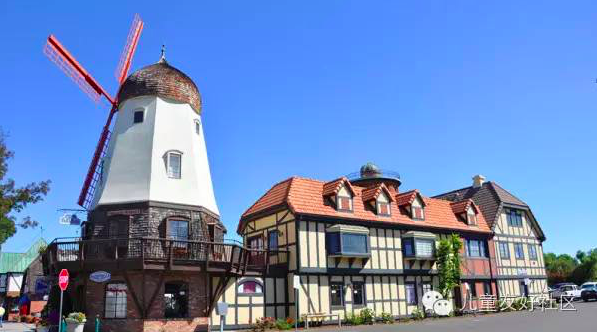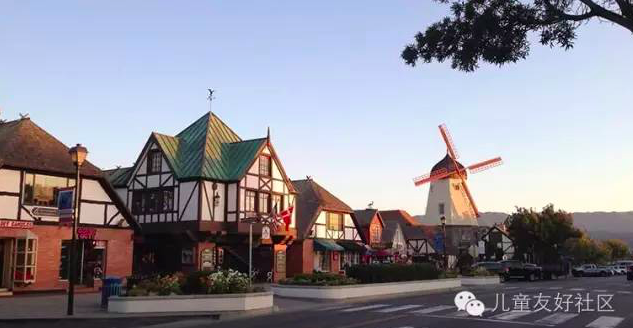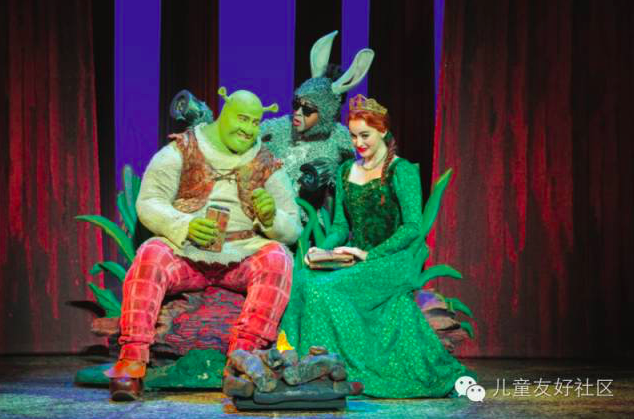
Denmark: Let children grow up in fairy tales-[Case]

Denmark, one of the five Nordic countries, is a highly developed capitalist country with a well-established social welfare system and a high quality of life. The thick ancient castle, poetic countryside and magnificent glaciers envelop this wonderland-like country, which is called the fairy tale kingdom. From childhood, all citizens here have been haunted by the friendly municipal construction and humanistic environment in fairy tales. The "Queen's City" Copenhagen is the capital and largest city of Denmark. The hometown of Andersen, beautiful architecture, and colorful cities, all make people stop and watch. The bronze statue of "Mermaid" quietly Standing by the harbor of Copenhagen, quietly commemorates the master who also guards this fairy-tale city.
The Danish government attaches great importance to the social welfare of children and families. To this end, the Danish Social Assistance Law expressly states: "Local governments should supervise the growth environment of children under 18 in the region. When a child is experiencing difficulties or is not happy with their environment, the local government must provide advice and assistance to their parents or guardians. " The Danish Ministry of Social Affairs is responsible for the development of specific welfare measures. Each local government has a special agency composed of social workers, nurses, educators, etc. They guarantee the specific completion of various tasks.
In addition, Denmark established an intra-ministerial committee dedicated to children's affairs in 1987. The committee is directly led by the Ministry of Social Affairs and acts as a coordinating body between the 15 ministries of the Cabinet directly related to the welfare of children and families. The living environment of children and families is Affected by all aspects of society, should not be managed by a single administrative department, but should be the responsibility of all relevant departments. The main task of the ministry committee is to strengthen the unity, connection and cohesion between the relevant departments, and effectively improve the environment in which children grow up. Under government supervision, state welfare agencies perform child protection functions, create the best social environment and organization for a family and their children, provide guidance and supervision to parents, and if necessary protect children who have lost care or been abused.

The planning and design of the capital city of Copenhagen is also worthy of its reputation as a fairy tale kingdom. It has specially designed roads for children, parent-child rides and activity spaces. Since the city was systematically built in the 20th century, it has respected, listened to and considered the wishes and feelings of children. , Has always been an important link to be considered in local government planning. After nearly 100 years of unremitting efforts, Copenhagen has built a multi-point outdoor children's play space in the urban area, which has promoted the overall child-friendliness of the city. The children's play area in Copenhagen is divided into three buildings. The first is based on the community where children live, the second is public areas (children's play areas and public parks and green spaces), and the third auxiliary area (schools, hospitals). , Churches, airports, etc.) to supplement the building's hierarchical structure. The construction of Copenhagen focuses on the attraction, adventure and intelligence of children, and as far as possible in combination with the needs of other family members. The design concept emphasizes coordination with the surrounding environment and provides children with exposure to the natural urban space.

Copenhagen's central square becomes a public urban space, including a stadium, a child care centre and a public bath. Roads, parking lots, and squares are simply and naturally separated, and can be easily reached by bicycle, car, and walking. The intersection around the central square has clear route signs, and the sidewalks are clean and equipped with sufficient lighting, which can ensure the safety of children even at night. The square has a polygonal design as a whole. It consists of concrete components, wooden platforms, neat plant beds, and black pavement. The facilities in the edge area have functions of leisure activities and sports. Their building materials and colors are in harmony with the entire square. The site provides facilities such as ice skating rinks, rest facilities, and plant protection facilities, which also create a natural physical barrier for the parking lot. In front of the child care center, the undulating rubber ground provides a free and safe place for children to play in a playful way, and parents can always pay attention to their children. Barrier-free facilities are built in various functional areas on the square to facilitate unimpeded passage of baby carriages, strollers, wheelchairs, etc.
In addition to the central city, Copenhagen is
also committed to protecting children's equality throughout the city, enjoying
all the benefits provided by the state and the city, regardless of nationality,
race, poverty or wealth. To the northwest of Copenhagen is the most
culturally diverse suburb, with almost twice as many non-western immigrants as
the rest of the city. As a result, residents in the Northwest Territories are
poorer, more often unemployed, and live in smaller public apartments than
residents in other regions. The Northwest Territories itself lacks public life,
and children are surrounded by high crime rates and filthy community
environments. This area is considered to be the worst area of Hagen and it is
a gray area in this fairy tale city.

To this end, the local government hired the SLA team to tailor a “1001 Tree” park for the local area, which can radiate one quarter of the community residents in the area and enjoy a harmonious and friendly public environment. The park consists of four simple but effective elements: trees, trails, light and cone-shaped terrain. These elements form order and coherence in different parts of the park and become distinctive features of the park. Diversity creates an atmosphere with color and living space, which is different from the dark and scattered environmental characteristics of the area.
Thanks to the new park designed by the SLA team, residents of the Northwest Territories have an unusual opportunity to reshape fairy tale life. They converted a large open area (formerly an abandoned bus terminal) into a space that could meet the needs of people of all races, nationalities and ages. Light, safe, and natural adventure adventures form an absolutely unique community park. Children play here, and adults also communicate because of the children's exchanges. They have activated the residents of the surrounding communities, made people of different races and countries familiar with each other, and increased people's sense of harmony. In order to prevent the cold light and strong light from harming children's eyes, the park's light tubes are mostly designed with lively warm colors. The light and shadow alternate as if they were in a dream garden. Due to the park's unique lighting design, the SLA team won in 2010. Danish Best Lighting Design Award ".
The 1989 UN Convention on the Rights of the Child was issued, which requires cities to adapt to all people, especially children living on behalf of the future of humankind, and considers children's rights as a core element of urban development. In 1996, the UNICEF and UN-Habitat jointly developed and advocated the “International Child-Friendly City Program”, which became a programmatic document for the construction of child-friendly cities. Copenhagen, Denmark is among the first to be certified by the International Secretariat for Child Friendly Cities. The fairy tale kingdom deserves to be a model of a child-friendly city.

Denmark not only has excellent urban construction from the perspective of children, but the Danish government as a kingdom of fairy tales also attaches great importance to the artistic life and mental health of children. Since 1971, the Danish International Children's Theatre Festival has been held for nearly half a century. Children The Theatre Festival is one of the three major international theatre festivals and an annual feast for Danish children.
It is the consensus of the Danish art community that the best contemporary artists are involved in the creation of children's dramas. Children's drama creators' "knowledge" of children is also intuitively reflected in the segmentation of audience age. At the 2015 Drama Festival, one quarter of its repertoire is suitable for infants and young children under 3 years old (and divided into "more than 6 months", "1-2 years old", "0-3 years old", etc.) One is suitable for children under 6-12 years old, and one quarter is suitable for 10-99 years old. All repertoires are free to the public during the festival: Monday to Thursday, the repertoire is scattered in local kindergartens, schools or cultural centers to ensure that every child in the area can watch a drama. The cost of such an art festival is about 4 million Danish kroner, with the state and the host city government sharing half of it. With such a high cost of hosting, Danish local governments are still vying for bids. The cities waiting to be hosted until today have lined up until 2020. People have reached a consensus on the significance of theater art to children. No doubt art can make childhood better and make childhood life more colorful.
The basic construction of the city is the hardware strength to create a child-friendly city, while enriching the minds of children and letting art accompany growth is soft strength. Only when the two form a joint force can we truly become a child-friendly city. Mr. Chen Jiaying once said that what is a good life is to know what to do, and it is no doubt that in order to let children in this country live a fairy-tale life, everything that they do for them must start from the bottom of their hearts and work hard. Think, make every child-friendly thing to the extreme, have made outstanding performances all over the world, pursue excellence, never forget to create a good environment for children to grow up, and success has caught up inadvertently Denmark has made the Kingdom a model, and it is also worth learning from all countries.
(This article is adapted from "Community World" feed / Edited by Aoya Design Wang Yixin / Zhang Yuqi)